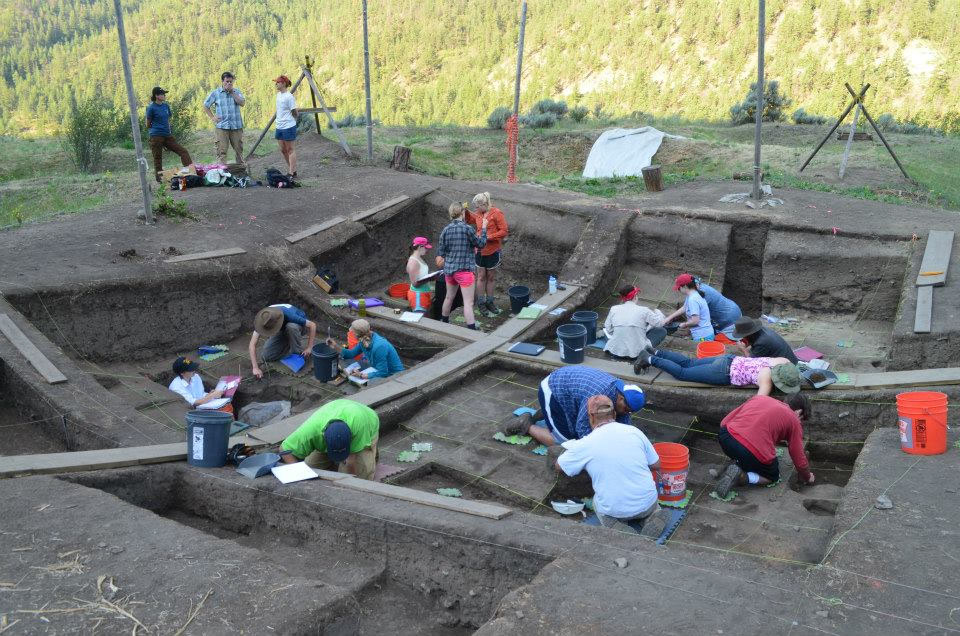
Eleven students from Hamilton College, Western Connecticut College and Selkirk College are participating in a six-week intensive archaeology field immersion course in the prehistory, history, ethnography and language of the indigenous peoples of the interior Pacific Northwest. The bi-annual program has been directed by Assistant Professor of Anthropology Nathan Goodale since 2007 at the Slocan Narrows Housepit Village in southeastern British Columbia.
Goodale spoke with Rebecca Zandbergen of “Radio West,” a program on CBC/Radio-Canada on July 6 about the field school and their goals. The program, titled “Discovering the Slocan Valley pithouses,” provided details on the program and its history. Regional newspaper articles have also publicized the program as well as a planned open house and tours of the site that regularly attracts hundreds of community attendees.
The 11 students, along with Goodale and Visiting Instructor of Anthropology Alissa Nauman and Teaching Assistants Catherine Prescott ’12 and Lisa Smith (Ph.D. candidate, University of Montana) will continue to conduct archaeological field work until July 20. Participating Hamilton students include Emily Rubinstein '16, Katherine Hill '14, Micah Stimson '15, Clair Stover '14, Morgan Biggs '16, Bridget Maguire '16, Griffin Abbott '15, Kevin Castro '15 and Maxwell Lopez '15.
During the course the students are being trained in archaeological field methods and the Sinixt nselchin (Salish language). In the first week of the course, the students began to excavate in a pithouse that emerged approximately 2,700 years ago with occupations extending to the contact period. The pithouse is approximately (20 feet) in diameter and could have housed between 75 and 100 people during the winter season.
Students are continuing research from previous field schools that collected information used to date the many pithouses that comprise the Slocan Narrows site. The objective of the 2013 field school is to begin to understand the social organization of these people. By the third week of excavation, the researchers had begun to reach the cultural layer, where most artifacts will be likely to be found.
